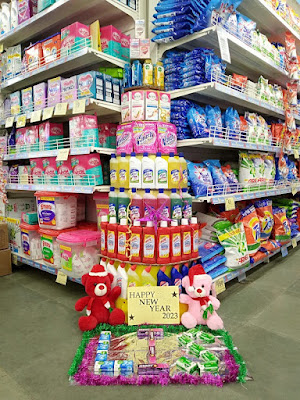Below-the-line (BTL) Advertising
The company can maintain control over its promotional efforts and avoid paying intermediaries and outside agencies by utilizing below-the-line promotion techniques. Therefore, compared to ATL promotion, BTL promotion is more affordable.
BTL advertising targets people according to their needs or preferences and can result in sales. It is simple to measure the results, which provides valuable information for calculating return on investment. Here we will talk about two of the many btl activities in retail.
The following are some examples of BTL advertising.
- Promo for sales.
- Direct mail and direct marketing.
- PR, or public relations.
- Sponsorship.
- Personal selling.
- Advertising and marketing.
- Packaging.
- Telemarketing.
- Trade shows and exhibitions.
- Promotion of sales.
Sales promotions or btl activities in retail are short-term strategies to increase sales by luring new clients and motivating current ones to make larger purchases. There is a belief that trying the company's product will foster brand loyalty, even though offers might be transient.
There are expenses associated with sales promotion. For instance, offers, discounts, and free samples lower a company's profit margin.
There are two categories of sales promotion:
These btl activities in retail are planned and intended to entice wholesalers and retailers to stock the product. These consist of rewards like discounts, favorable terms of payment, prizes, as well as merchandising, display, and other related supplies.
The manufacturers of these products engage in promotional activities to entice consumers to make larger purchases. Some examples are incentives like discounts, freebies, giveaways, BOGOF deals (buy one, get one free), coupons, and contests.
Promotional activities such as unique displays, tastings, demonstrations, and sales presentations are point-of-sale promotions aimed at customers in retail establishments. These btl activities in retail are typically used with coupons and other exclusive deals for purchases made at that store. This marketing seeks to promote impulsive purchases.
Direct selling.
Your information might be gathered somewhere when you make a purchase, primarily online. Companies like to collect as much information about you as possible because it may be even more valuable than the actual purchase. You may not always read the fine print about sharing your details with "trusted partners," which means various other companies will likely target you in the future.
Businesses use loyalty cards to collect information about your purchasing habits, which they can then use to sell your information to other companies or target you with additional offers. Even governments sell the data they collect about you from census forms, student identification cards, and passport and driver's license applications.
Without utilizing conventional formal advertising channels like TV, newspapers, or radio, direct marketers target consumers directly. Using direct marketing strategies like flyers, catalogs, and promotional materials, businesses speak now to consumers. Immediate response advertising is when a product or service is advertised, and the consumer is asked to take some action, like calling a toll-free number or visiting a website.
Direct marketing is the area of marketing that is expanding the fastest. Shop trend. Png. Numerous research organizations examine market trends, concentrate on consumer behavior, and market their findings. They are likely to compile and sell lists of prospective customers to businesses. For example, if you want to sell kitchen knives, you will have a list of customers who regularly purchase kitchen equipment, and the same is true even for the most specialized businesses. You will be aware if you use online retailers like Amazon that they will use your past purchasing history to target you with products they believe you will be interested in.
Most small to medium-sized businesses that use direct marketing do so because they need a stronger brand identity and constrained advertising budgets
Direct Mail
The delivery of promotional materials to specific individuals at their residences or workplaces, chosen from a list of known clients, is known as direct mail.
Because most recipients throw away the materials they receive because they are not considered essential or desirable, this is sometimes referred to as "junk mail.". The likelihood of the mail being thrown away is significantly decreased, though, if direct marketers target the right customers with products and services they are likely to be interested in.
Although it is a more customized form of advertising for the company, it frequently needs to generate more sales revenue to be used effectively. A more affordable way to contact potential customers is through telephone selling.




Comments
Post a Comment